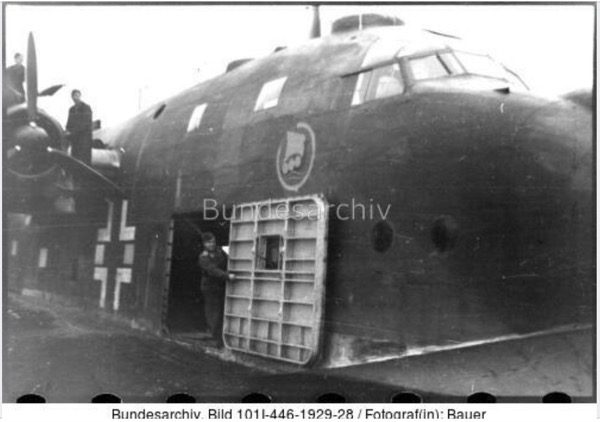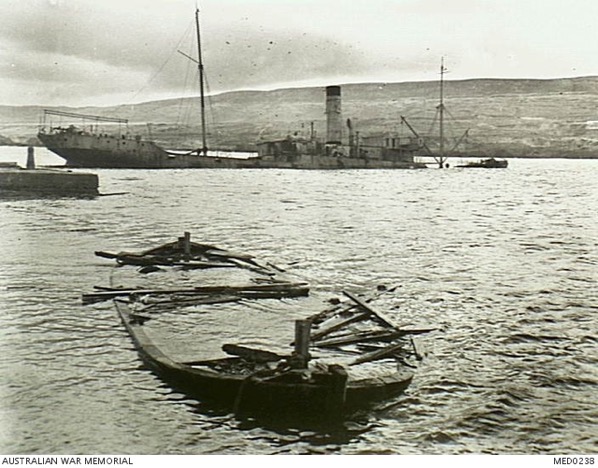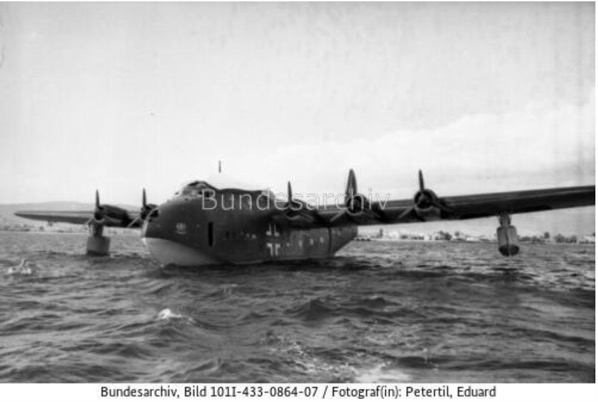Background
The Blohm & Voss 222 Wiking (Viking) was a large flying boat, constructed in very small numbers during the war. Originally planned for commercial long-distance operations, similar to the Pan Am Clipper fleet, the planes were utilised for military purposes by the Luftwaffe, where their flexibility, as they did not need an airfield, and large size made them very valuable assets when it came to servicing German armed forces formations in remote destinations.
The challenge of handling troop transport
Until the sinking of the Lampo convoy off Kerkennah in April in April, the bulk of the men destined for North Africa, which would have included almost anyone going over for 5th Light, and some soldiers with 15th Panzer, were transported by ships. E.g. Kybfels on 19 Feb took almost 600 men, and that was not an unusual number. But this carried specific dangers, as these same transports carried vehicles loaded with fuel and ammunition, as well as ammunition as cargo. So if they were successfully attacked, the chances of rescuing many of the soldiers were slim.
After the transport of men on merchants carrying ammunition had therefore been forbidden, the next attempt was to bring them over on large liners, converted to troop transports. This went through until in September 1941 HM/Sub Upholder sank two liners just outside Tripoli, in a single attack with heavy loss of life amongst the soldiers of the Italian Trieste division. The next step was to use light naval units, auxiliary cruisers, and air transport. For example, in November 1941 the men of the Africa Regiment’s artillery battalion arrived in Benghazi on two smaller auxiliaries, without guns or much in the line of other things, while the infantry of the same regiment was flown from Italy to Derna, without anything other than their rifles (see e.g. here on the effect this had).

A BV 222 Wiking in North Africa, 1941. Bundesarchiv Bildarchiv
The BV 222 in North Africa
From late summer 1941 onwards, the BV 222 was used on the North Africa route, operating from Athens Piraeus harbour into destinations such as Tripoli and Derna, and later in 1942 also into Benghazi. Most missions went into Tripoli, which saw the planes quite regularly from 19 September 1941 onwards.
The BV 222 provided a way to rapidly shift personnel into North Africa, as each plane could take 80 soldiers, more than four times the number that could be carried on a Junkers 52. Furthermore, the planes could take a substantial number of 30 wounded or sick soldiers back to Europe, thereby reducing the pressures on the medical and logistics systems in North Africa. As a single Ju 52 could only carry 17 men, using a larger plane made sense. Similarly for critical cargo, where a Ju 52 could take 2 tons, while a BV 222 could carry six tons. This was important, as over the course of 1941, the transport of soldiers had become progressively more challenging.

Detailed shot of a BV222 during a mission to Tunisia, 1943, giving a good idea of the plane’s size. Bundesarchiv Bildarchiv

Derna port, wrecks of SS Lodoletta and a smaller vessel. AWM
Mission to Derna
A while ago Member Brady asked a question on the Axis History Forum regarding some pictures of the BV222 he found in a private collection. He suspected they might have been taken in Tripoli or Benghazi, probably in November 1941. I started some sleuthing, checking the pictures and comparing them to those of Derna port, and checking the war diary of the German naval transport officer in Derna. It became quickly clear that the pictures were taken in Derna, and even the time and date could be narrowed down to two possibilities, which confirmed the time frame given by Brady. The two possible dates are 28 October, when the BV 222 – landed with 60 men returning from leave at 1345 hours, and left at 1445 hours with 30 wounded for Athens, or 29 October, when the plane landed at 1315 hours with 70 men returning from leave, took off 1420 hours with 30 wounded for Athens.
Cross-checking information from the war diary indicates that the motor schooner (Motoveliera/MV) in the back is MV Unione, which plied the Benghazi-Derna route at the time, bringing forward hundreds of tons of supplies on each voyage, relieving the coastal road traffic. MV Unione was sunk in November 1941.

BV 222, on final approach into Derna, around midday 29 or 30 October, 1941. Private collection.
BV 222, MV Unione, and the wreck of SS Lodoletta, 29 or 30 October, 1941. Private collection.

